 |
| Arco Iris Peruvian restaurant in Gotanda, in the Shinagawa ward of Tokyo (Japan, 2009) |
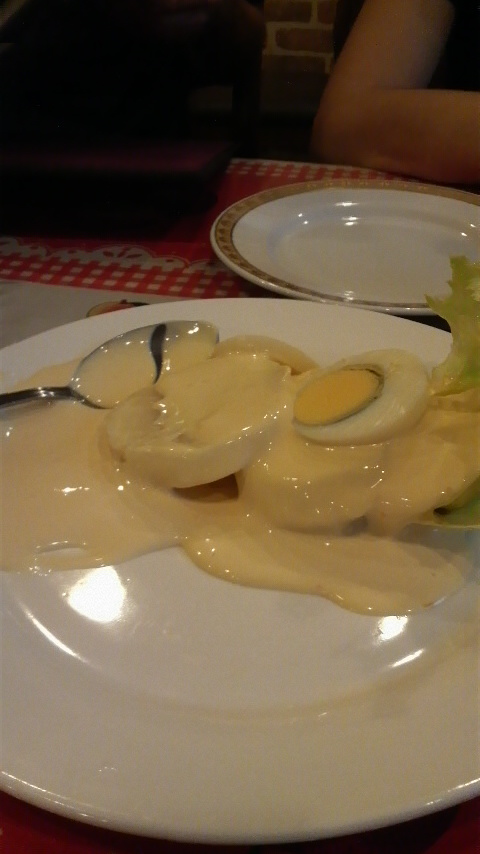 |
| Thick slices of potato topped with egg and a winning cream, at Arco Iris (Japan, 2009) |
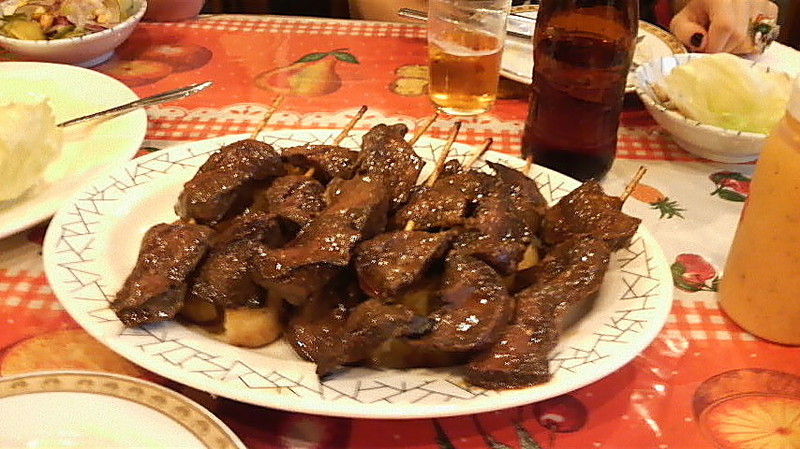 |
| Skewered cows' hearts, or so I was led to believe, laid atop a soft potato bed (Japan, 2009) |
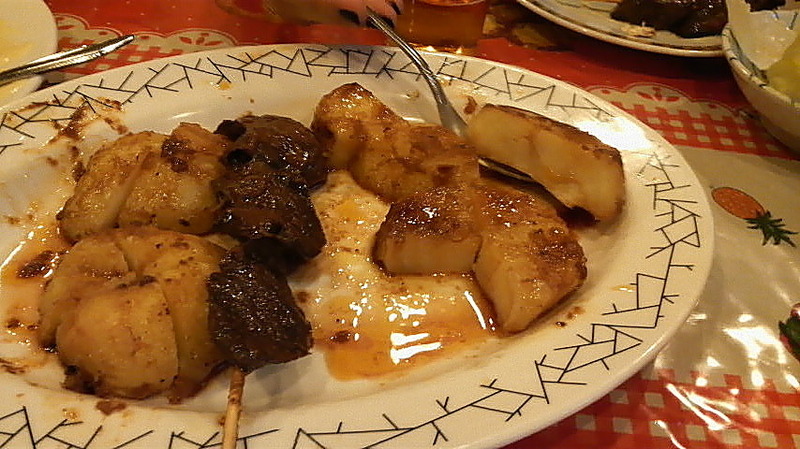 |
| The bed of beautiful potatoes lies exposed, beneath the skewered hearts (Japan, 2009) |
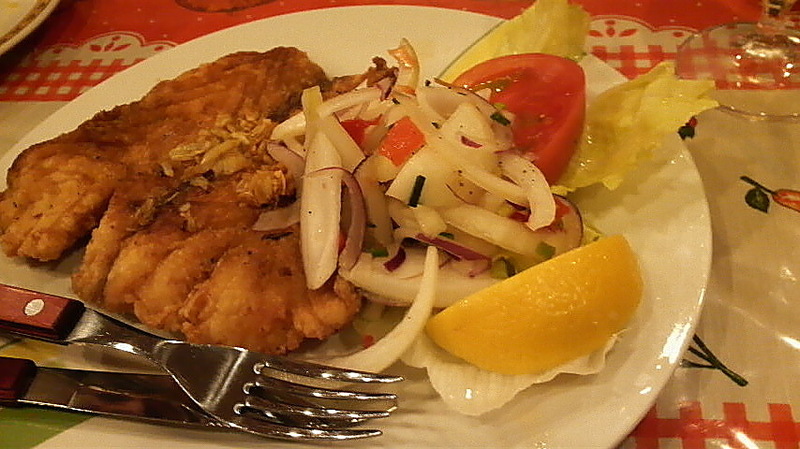 |
| Fish dish with salad, at the Arco Iris restaurant, near Gotanda station (Japan, 2009) |
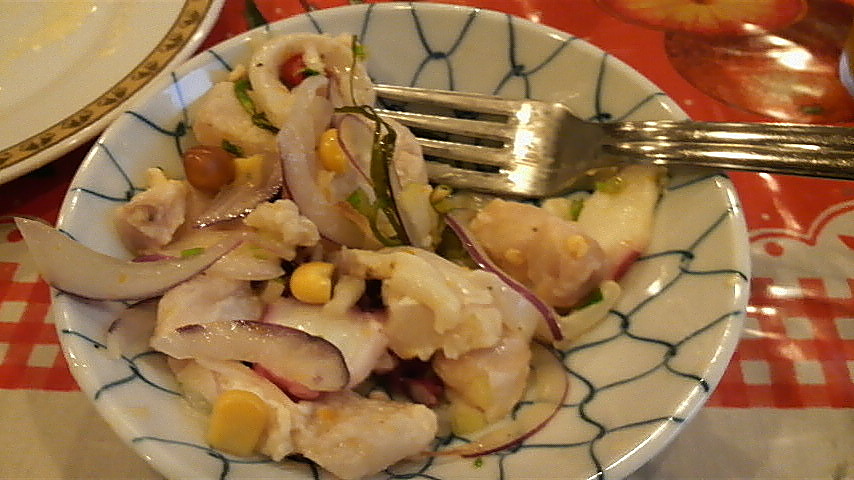 |
| This octopus salad ought to appeal to the Japanese palate (Japan, 2009) |
